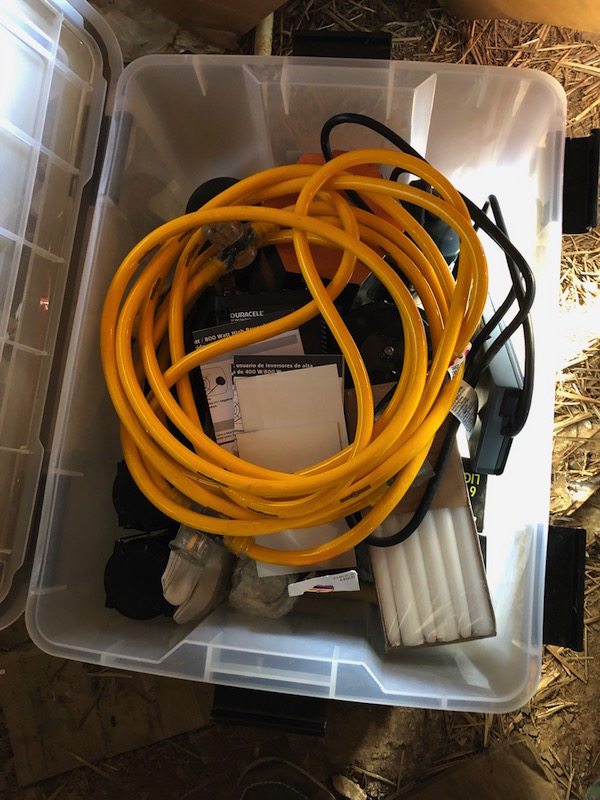
*The Blackout Kit in a Box*
By: Boboroshi
28 April 2019
I'll say it first: this is not a unique idea. Many people in the preparedness space have suggested something along these lines with various degrees of how-to and complexity. This is an overview of what we've done that works for us in the Mid-Atlantic on a small farm. Your milage may vary.
Goals of the kit in a box
Layers of Fallback
The kit isn't just a single one-and-done. Often power outages can be quick, or even more flickering related. So layer one is permanently in place: UPS systems on the network connection (DSL), desktop computer, and power filters on sensitive electronics. For some items we use rack-mounted power conditioners, and for others we use the ARRL EMP Outlets (as described in QST November 1986, pp34:
http://n3ujj.com/manuals/EMP%20and%20the%20Ham04.pdf
If the power goes down, the DSL connection and wifi will remain up for many hours without any additional power generation. There are also two lamps with LED bulbs in them in this room, so these will stay on by default. Network access allows us to file the outage with the power company as well as maintain our awareness of what's happening around us and if there's any greater emergency. The lights allow us to see in our living room while we do our initial work.
The second part of our first layer are automatic lights that come on when power is cut to the outlet. We have these spread out throughout the house so you can see light in any bedroom, the bathrooms, and the kitchen. These are mostly for the benefit of lighting at night if the power goes out while people are sleeping. The UPS with the network attached has an auditory alarm, so that tends to wake us up if the power has gone out in the middle of the night.
Finally we have a variety of battery powered flashlights and mini lanterns with homes throughout the house. These are meant for us to be able to grab quickly so we can go to the next level if need be. We have a half height watertight box with additional fallback flashlights and Enloop batteries in AAA and AA sizes. We also have a variety of the C and D shells that take AA Enloop batteries inside them. They don't have the longevity of a traditional alkaline cell, but being rechargeable, they let us run indefinitely.
Unless it's looking to be a long outage or the natives (the children) are restless, this is all that is deployed. Once things look like they'll be more than a few minutes, we get out the blackout box tote.
The Blackout Box

This is a large, waterproof tote from the Container Store that is clear, so we can see the contents inside. It contains the following:
Nearby the blackout box, in the cellar, we also have a variety of Dietz lanterns that we can get out if needed. These generate a bit of heat, and like any flame can be a fire hazard, so we tend to only use these in longer term circumstances. We also have an additional box of 4 eTek lanterns as well (for a grand total of 8).
We have a charger for the enloops in the house and one in the barn office as well. We try to keep them fully charged all the time.
The generator is stored in the old garage (a 1950s shed about 30' from the house). We run it there under cover but with the door slid open and then run the extension cord to the house. We can charge batteries directly here for items that we don't want to run on generator power.
Heating and Cooling
In the winter, we have a Vermont Castings wood stove running almost all the time, so that maintains heat in most of the house. The DC fan helps keep the air moving around the fireplace and also works in the summer months to keep things cooler. We have an older window AC unit for summer emergencies, but have not had to use it in a few years.
Future Improvements
Future improvements include adding solar charging for batteries, adding an additional eu2000i unit (they can be chained together) or dedicated generator for powering 350'+ deep wells, and working up a precise layout of power cords running to certain locations throughout the house (right now we just run through the living room to the kitchen, which is our primary power need).
Boboroshi
www.alpharubicon.com
All materials at this site not otherwise credited are Copyright © 1996 - 2019 Trip Williams. All rights reserved. May be reproduced for personal use only. Use of any material contained herein is subject to stated terms or written permission.